The 9 Best Vintage Cameras: For the Retro-Lover in You
Rent film gear from local filmmakers.

Rent film gear from local filmmakers.
The Best Vintage Cameras in 2025
Editor's choice
Best value for money
Community Pick
Featured
FAQ
Research
The Wedio community reviews everything we recommend. When you buy through our links, we may earn a commission. Learn more
If you are like me, a person who loves to create memories and wants to capture them in the best possible way, you should consider getting a vintage camera.
In this article, I've taken the liberty to write down the nine best vintage cameras, their key features, style, and pros and cons for each. If you think you don't know enough about the cameras and which one to choose, this article will come in handy. Explore the fascinating world of film cameras for beginners, where these vintage gems offer a user-friendly entry point into the art of analog photography. Delve into the rich experience of capturing moments with simplicity and discover the joy of creating timeless images with these specially curated options.
Remember that these cameras are not meant to give you the highest quality but a certain aesthetic.

Leica M6
The M6 is a commonly chosen option among professionals, novices, and anyone who enjoys shooting film and wants the process to be flawless.
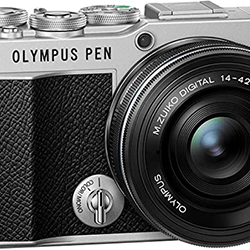
Olympus Pen E-P7
The E-P7 is the perfect camera for beginners and trip photography since it combines a gorgeous appearance with a tried-and-true engine.
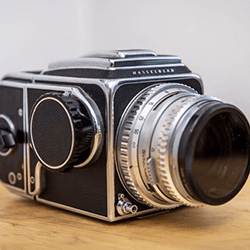
Hasselblad 500C/M
A good camera to start with if you want to learn more about the Hasselblad system.
Want more gear recommendations? Read our comprehensive article on fundamental camera equipment.
The 8 Best Vintage Cameras in 2025
Editor's choice

1. Leica M6
Read full reviewPros
Small size
User friendly
Easy to learn
Takes photos silently
Completely mechanical
It takes the most beautiful pictures
Strongly built
Cons
Expensive
Bulky and a bit heavy
The available controls are a bit too basic for the price
Camera style:
Leica M6 is one of the most advanced film cameras ever produced by Leica. The body is made of Zinc and brass, making it durable and visually appealing.
Leica M6 is compatible with almost all Leica M-Mount lenses - this makes the camera more attractive to users that want to photograph in different settings.
Additionally, the embedded rangefinder makes it possible for you to measure the subject's distance and take photographs in sharp focus.
The camera is a fully mechanical masterpiece that allows the user to shoot at any shutter speed from 1/1000 of a second to 1 second, or bulb mode, all without batteries.
Last but not least, Leica M6 has a TTL (through the lens) system, which is used for light measurement that provides accurate exposure settings. I must say, this camera truly takes incredible pictures, with fantastic quality.
Specs
Viewfinder
0,72 x (includes frame lines compatible with six other lenses in the 28-135 mm focal range
Shutter speed
from 1/1000 of a sec. to 1 sec
Embedded rangefinder
Yes
System
TTL
Battery
Two LRR44 batteries to power the internal light meter
Mechanical
Yes
Shooting process
A straightforward and hassle-free
Show more
Features
Exceptional build quality
Leica almost never compromised on build quality. The majority of Leica cameras and lenses, including the M6, have exquisite construction. It's still substantial despite the different construction components from earlier models. A film counter, a film advance lever, a film rewind crank, and a shutter speed dial are all located on the top plate of the body. The only other thing on the back plate is an ISO dial for the light meter.
Precise light meter
The M6's light meter is remarkably precise. The viewfinder itself is clear and well-lit. Depending on the type of viewfinder you have and the lens you're using, you'll see two different sets of frame lines when you look through.
Effective kit lens
As part of its Classics range of retro lenses, Leica will also reintroduce the Summilux-M 35mm f/1.4 along with the camera. With an aperture range of f/1.4 to f/16, this "legend" of a lens is reputed to be the "True King of Bokeh." You may always use it with Leica's M-mount digital cameras since it isn't exclusively made for film cameras.
Final Verdict
The upgraded M6 released in 2025 maintains the M6's appearance while incorporating some technologies from Leica's MP film camera. It has a solid brass construction, an LED light meter, a center dot, and a battery warning light.
It also has the anti-glare 0.72x MP-Style viewfinder from the MP. Leica does not specify what specifically has changed technologically from the original M6 models, but it employs the same rear ISO dial and has "new electronics."
Best Value for Money
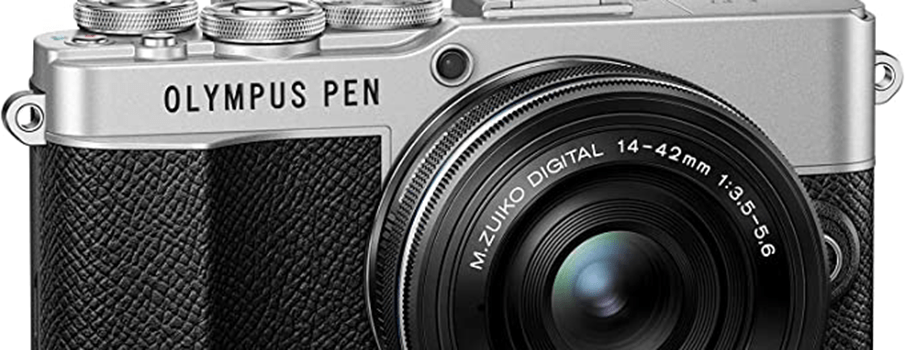
2. Olympus Pen E-P7
Read full reviewPros
Ability to capture high-speed VGA footage at 120fps.
Robust and solid in-hand
31 art filters in total
Images at excellent quality
Cons
A bit outdated, but then again, it's a vintage camera
Expensive
Camera style:
With the Olympus Pen E-P7 being lightweight and small-sized, it does not stand out from other vintage cameras, but that doesn't make it less beautiful.
The E-P7 has the same lines as a proper classic camera and is elegant and compact. There are two distinct colors to choose from, so you set the tone. The E-P7 is a true treasure trove when creating creative expressions.
If you dig a little deeper into the features, you will find several tools for creative inspiration.
Specs
Sensor
20.3 MP 4/3 Live MOS
Lens
Micro Four Thirds
AF points
121-point contrast-detect
Stabilization
5-axis in-body image stabilization, 4.5 stops
Max image size
5184 x 3888
Show more
Features
Great image quality
The E-P7 produces results that are comparable to those of the PEN-F or the E-M10 Mark IV in terms of the photos they create. Regardless of the lenses you use, your photos will be rich, precise, and defined. The M.Zuiko 14-42mm EZ Pancake lens fits perfectly in the body, which maximizes the resolution of that overachieving piece of wonderglass.
Updated autofocus
The E-P7 has the same upgraded autofocus technology as the E-M10 Mark IV. While it still uses contrast-based AF, it is far superior to that of the PEN-F or any of the earlier E-PL cameras. Even while it's not quite as magical as the phase detect systems of the Olympus OM-D E-M5 Mark III and Olympus OM-D E-M1 Mark III, the face and eye detect are quite accurate when shooting stills and videos.
Final Verdict
The Olympus PEN E-P7 is a great example of the PEN series' return to form and a success for OM Digital Solutions' initial offering. It is portable and fashionable, easy to use even for novices, and powerful enough to provide amazing results for pros.
This is the ideal take-anywhere, shoot-anything camera since it has IBIS, which makes shooting video simple, and it has the power of an OM-D in your pocket. It is excellent for still photos.
Community Pick

3. Hasselblad 500C/M
Read full review4.9
Based upon3 reviews from Wedio members

Effectiveness
4.8

Usability
4.5

Value for money
4.9

Overall rating
4.9
What creators like
See all reviews
Pros
Affordable camera
Sharp images
Easy to focus
Cons
No self-timer
Bulky
Camera style:
The Kiev 88 lets you take sharp images because of the roll film of 61.5 mm width. You can switch between colored photos to black and white without any difficulties.
The camera's manual control makes it easy for a photographer to customize the setting and take incredible pictures.
The Kiev 88 also possesses a hooded design which eliminates excessive light and makes it easier to focus.
Specs
System
TTL meter
Lens
Type B
Viewfinder
Yes, interchangeable
Camera
645 format camera
Show more
Features
Easily disassembled
The entire camera may be disassembled and replaced with different parts to meet our needs. Also exceptional, if not universal, is compatibility. A vintage silver chrome C lens could be paired with the most recent 503 CW with digital back. Similar to that, a 500 C will take the most cutting-edge CFi lenses to come out of Oberkochen.
Powerful V-lens system
If the Hasselblad's ability to be completely modular was its strongest suit, then the German-made Carl Zeiss lenses must be viewed as the deciding factor. The first lenses were revolutionary when they were created, and they still hold up well by today's standards. The renowned T* multi-coating gained worldwide recognition because of these lenses. The V system instantly distinguished itself from its rivals because of its definition, clarity, and resistance to flare.
Final Verdict
The Hasselblad is a high-end medium format camera that was developed and produced in Sweden. The 500c is the first model to feature a leaf shutter, but if you can find one for a reasonable price, it is a good starting place for learning about the Hasselblad system.

4. Nikon F2/F3
Read full reviewPros
Decent image quality
Well built construction
The viewfinders are interchangeable
Cons
Difficult if you attach large-aperture lenses
No auto mode is available in F2 but is in F3
Camera style:
The Nikon F2 and F3 are very similar. They both have an interchangeable finder, focus screens, 250-exposure back, and motor drives. The F2 is so well made that everyone I have seen working with it still captures excellent photos.
The F2 and F3 capture and expose the colors, the fine lines, and the details in a picture. The only difference between these two cameras is, the F3 feels more modern. The electronic shutter is more accurate, more ergonomic, and has auto exposure, in addition, the F2 is fully manual.
Specs
Mount
Nikon F
Lens reflex
35 mm single-lens reflex (SLR)
Shutter speed
Mount shutter speed increased to 1/2000
Viewfinder
Interchangeable finder
Focus screens
Yes
Exposure
250-exposure back
Prism
Yes
Cassettes
250-frame cassettes
F3: Auto exposure
Yes
Show more
Features
Well-built body
When you have the F2 in your hands, you can see why photographers loved it so much. It doesn't even come close to being a light camera, but it definitely feels like professional gear. Its applications are countless because it is a systems camera with a common and well-made body.
Self-timer
The F2 features a self-timer as well, which is a unique feature that enables the photographer to set shutter speeds between 2 and 10 seconds. Set the camera to the "T" position by turning the collar around the shutter release to make this possible. Set the self-timer to the proper duration after that. Without doing so, the self-timer operates similarly to other conventional timers.
Distinguishable controls
A battery check button and a maximum aperture window are located on the front of the finder. When a lens is attached using the "Nikon twist," this demonstrates the maximum aperture. All the necessary information is visible at the bottom of the finder. The shutter speed, exposure match needle meter, and aperture window are listed starting from the left. By slightly drawing out the film advance, the meter is turned on.
Final Verdict
Many photographers regard the Nikon F2 as the pinnacle of all legendary cameras. The camera made Nikon the preferred brand of camera among photographers. This does not imply that the F2 is a sophisticated camera.
With a polished design that yields nuanced and beautiful results, using a Nikon F2 is comparable to approaching photography with a blunt instrument.
The Nikon F3 continues to be a great pick for active professional photographers in the legendary F-line. The F3/T is a more rugged alternative to the F3HP for photographers who have to deal with challenging shooting situations.
It is built with a sturdy diecast aluminum alloy chassis with titanium covers and is equipped with a high eyepoint viewfinder as standard equipment.

5. Pentax K1000
Read full reviewPros
Cheap
Vintage construction that offers robustness and durability
Easy to understand mechanics and manual setup
Easy to repair and purchase spare components - the manufacturer still produces several viable lenses, 31-, 43-, and 71mm models.
Cons
Risk of insufficient light meter calibration
No on-off switch - remember to put the lens cap on when not using the camera
Camera style:
The Pentax K1000 is used by professionals, hobbyists, and photography students. The camera is one of the best and cheapest film cameras you can find. It was produced in 1976-78, Japan. It consists of a durable design, a high-quality light meter, and a compact design.
The Pentax K1000 has a chrome - and leather decorated design, making the camera visually appealing. If you are new to photography, this might be the right camera for you.
It has minimal features, making it simple to use, and a good film camera for beginners. This camera is perfect for capturing an aesthetic look in your images.
Leave the lens cap on when you are not using the camera, there is no on-off switch for the exposure meter, so it works continuously.
Specs
Mount
35mm film SLR camera
Shooting controls
Aperture, shutter speed, and focus
Manual photography
the all-manual operation and minimalist features include controlling shutter speed and aperture
Shutter speed
Wide-ranging shutter speed from 1/1000 to 1 sec
Self-timer
No
System
Full frame averaging TTL metering with built-in coupled match-needle meter ASA range: 20-3200
Show more
Features
Fully mechanical shutter
With the K1000, Pentax kept things straightforward by using a fully mechanical shutter system. This meant that the K1000 just needed a few SR or LR44 batteries to power the metering system, but you could happily fire the shutter without any batteries - exactly like the 1982-released Nikon FM2.
Full-scene averaging
Speaking of metering, the K1000 creates exposure by using a full-scene averaging technique. It's important to keep in mind that the K1000's meter does not turn off automatically; instead, you must first replace the lens cover in order to prevent unnecessary battery loss.
Final Verdict
Even though it lacked some of the more advanced capabilities that other cameras at the time possessed, its minimalist and straightforward design contributed to its success. The K1000, an SLR that was ideal for novices, should be commended for helping millions of photographers master the fundamentals.
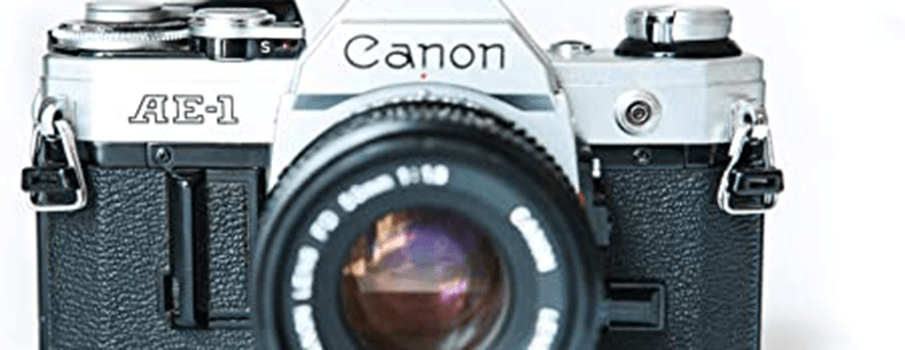
6. Canon AE-1
Read full reviewPros
Not that expensive
Lightweight
A variety of controls for manual settings
Extra unique controls will inform you if the shot is out of focus and a tripod is required.
Soft color tones (LOVE)
Full-program auto mode
Cons
It can be confusing for those who are used to digital cameras
Camera style:
Hobbyists and professionals use the Canon AE-1 due to the availability of FD mount lenses and how user-friendly the camera is. The lenses have a reputation for sturdy design, which makes the lenses reliable due to time.
The Canon AE-1 is one of the best vintage cameras you can find. The camera's release revolutionized the photography world and is easy to understand and use for ordinary users – point, focus, and press the camera button when you shooting.
The simplified Canon AE-1 has an ample variety of additional accessories, which is also easy to get the hang of. The AE-1 Program is highly recommended because it represents a high point of camera development and has every feature needed for great photos.
Specs
Waterproof
It operates as deep as 16.4 feet and takes underwater shots with a focus range of 1.5 to 9.8 feet
Electronic camera
Yes
Program mode
Fully automatic program mode
shutter-priority mode
Wide-ranging shutter speed from 1/1000 to 1 sec
Shutter-priority mode
Semi-automatic (Set the lens to A and choose your shutter speed - the camera will select the correct aperture)
Show more
Features
Adjustable ISO
To calibrate the camera's light meter to match the ISO of the loaded film, turn the ISO dial on the top left of the Canon's body. Additionally, it can be set a little bit higher or lower than the "box speed" of the film; this is known as over- or underexposing the film. The film that has been overexposed or underexposed can then be developed differently from the film that was shot at box speed to get the desired final picture styles.
Special shutter dial
The amount of time that light will expose the film depends on the shutter speed of the camera. A dial on the top right of the body controls the shutter, which may operate at rates ranging from 1/1000th of a second to two seconds on the AE-1 Program. The shutter stays open for as long as the shutter release button is depressed while using Bulb mode, which is set on the same dial. Only when a shutter release cable is utilized and the camera is mounted on a tripod do images taken in this mode turn out useful or even aesthetically pleasing.
Final Verdict
The cost of an AE-1 in good condition with a 50mm f/1.8 shouldn't be much more than $150. Just keep in mind that a couple of problems, including bad light seals and the reflex mirror returning slowly and making a loud squeak, can arise if they aren't taken care of.

7. Rollei 35 S
Read full reviewPros
Small - fits in your pocket
Lightweight
The viewfinder is bright with clear frame lines, easy to compose with
Great for street photography due to the small size and quiet shutter
The lens will surprise you (in a good way)
Hyperfocal distance focusing helps for undercover type shots
Cons
A bit difficult to use
The light meter may not work due to the age
The position of the flash
Camera style:
The Rollei 35 S has existed since 1966 and is known for being the smallest existing 35 mm film camera on the market. It was designed by Heinz Waaske and made by the German camera maker Rollei in their Singapore factory.
You can find the Rollei 35 in many forms, but the Rollei 35 S has a Sonnar lens, which is what the S stands for.
The lens is not coupled to the viewfinder, which means that you have to get good at estimating distances, know how far your subject is from you, and then use the lens's focusing ring to select the correct position.
It takes a little practice, mainly when used to automatic focusing as the Canon AE-1 possesses. It's a special camera and known for being quite quirky, which makes a lot of sense.
The way you shoot with this camera is different from any other 35mm camera.
First of all, the film wind-on knob is on the wrong side of the camera, and the flash hot shoe is underneath the camera. This means that if you want to take a photo with a flash, you have to turn the camera upside down, so your picture isn't upside down.
The designers wanted the camera to be as small as possible so you could have it with you all the time, but that concluded in putting the different functions in new places.
The camera takes black and white pictures, which gives a beautiful vintage vibe.
Specs
Format
35 mm
Lens
Roelli HFT sonnar 40/2, 8
Shutter speeds
½ - 1/500 + B
System
Match needle metering system, and a built-in light meter
Scale focus
Metric/feet
Show more
Features
Adjustable exposure
You are free to choose your own exposure settings with the Rollei 35 S, but you are not required to use Sunny 16 or an external meter because the camera has an excellent CdS match needle light meter. It's very easy to use; a tiny window next to the shutter button displays the traveling needle, which you have to "match" with the tiny red arm holding a round hone that moves as you adjust the shutter speed and aperture.
Precise lens and light meter
The 40mm f2.8 Zeiss Sonnar lens and incredibly precise light meter come standard with the camera. These little machines can assist you in creating precise, contrasty photographs with plenty of color and character thanks to their quiet leaf shutter.
Final Verdict
The amazingly small and powerful Rollei 35 S fits in your coat pocket and makes some quite excellent shots. Being one of the smallest 35mm cameras ever produced, this quirky camera is equipped with a fantastic lens and has earned a place in history books.
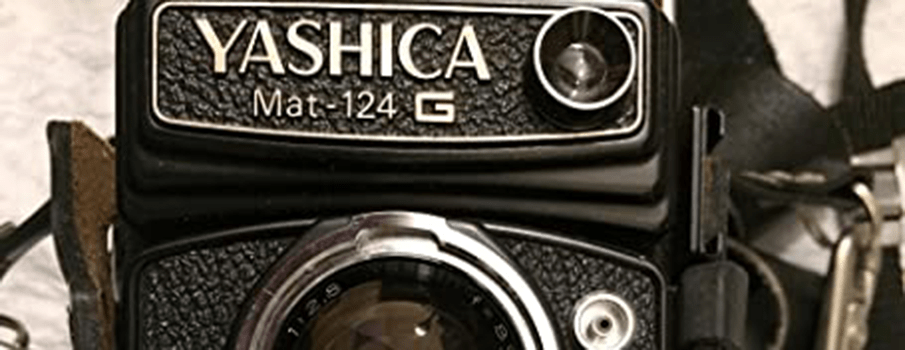
8. Yashica Mat 124G
Read full reviewPros
High-quality images
Waist level viewfinder
Cons
A bit expensive to shoot images - you get 12 out of one film roll.
Camera style:
The Yashica Mat 124G is one of my favorite medium format cameras. The camera has a well-deserved reputation for producing high-quality images on 120 films. It has a heavy feel, but that makes it sturdy in your hands.
For the price point, this camera creates beautiful and sharp images.
The coolest part of the Yashica Mat 124G is that you can see the image you are about to take from the camera's top.
That means, instead of using a standard viewfinder, you have the chance of using the flip-top, waist-level viewfinder to see what you are capturing, which makes the experience of shooting so much better.
This camera is also perfect for shooting some great Instagram photos.
Specs
Four-element
80 mm f/3.5 lens set
Shutter speed
1 sec. To 1/500
Aperture
from f/3.5 to f/32
Screen
A bright ground-glass viewing screen
Controls
Ergonomic aperture/shutter controls
Show more
Features
Modifiable shutter speed
The shutter, a Copal-SV, is a dependable, leaf-type camera made in Japan that enables shutter speeds up to 1/500. It also allows you to modify the shutter speed to any number you like, regardless of whether the shutter has been cocked or not. Under the taking lens is a delayed action escapement with a little winding knob, giving you access to a respectable mechanical self-timer.
Very easy to use
The Yashica Mat-124G is quite simple to use for shooting. Open the viewfinder, adjust the aperture and shutter speed to your preference, using the built-in meter or an external one, as appropriate, frame your shot, apply focus, depress the shutter release, and wind the camera.
Final Verdict
The Yashica Mat-124 TLR, a 66-format twin-lens reflex camera, is regarded as a fantastic entry-level camera for anyone making the switch from 35mm to medium format film.
It is simple, reliable, inexpensive, well-built, strong yet lightweight, and it takes reasonably nice pictures. This camera is worth a try if you're searching for a fantastic medium format TLR that won't let you down and won't break the bank.

9. Kiev 88
Read full reviewPros
Affordable camera
Sharp images
Easy to focus
Cons
No self-timer
Bulky
Camera style:
The Kiev 88 lets you take sharp images because of the roll film of 61.5 mm width. You can switch between colored photos to black and white without any difficulties.
The camera's manual control makes it easy for a photographer to customize the setting and take incredible pictures.
The Kiev 88 also possesses a hooded design which eliminates excessive light and makes it easier to focus.
Specs
System
TTL
Lens
Type B
Viewfinder
Yes, interchangeable (also lenses, film backs)
Camera format
645
Show more
Features
Accurate width of film roll
For better accuracy, this camera employs 61.5-millimeter wide roll film. Two interchangeable magazines that can be used with any method are available. These publications make it simple for photographers to switch from black and white to color. Additionally, the Kiev 88 magazines will accommodate various film sensitivities with simple selection. Every feature places a strong emphasis on both dependability and ease.
Lenses with effects
This camera produces either 16 6x4.5 exposures or 12 6x6 exposures when using 120 film. One of the key factors for this Russian Kiev-88 film camera is lenses. The majority of the standard lenses for this film camera may provide a variety of effects. Although the Volna-3 80-millimeter f/2.8 lens can be used with the Kiev 88, that is the lens that is most frequently paired with it. A multilayer antireflection coating on it blocks off excessive levels of natural light.
Final Verdict
Kiev 88 is a well-known medium format SLR film camera. Despite minor inconsistencies in quality level, its alluringly low price helped it become one of the most widely used entry-level medium format film cameras.
The Kiev 88 captures stunning images, and it is much more affordable compared to other medium format cameras in its class and produces images that are sharp and clear, much like the Hasselblad camera on which it was based.
Featured Cameras

Leica M6
The M6 is a commonly chosen option among professionals, novices, and anyone who enjoys shooting film and wants the process to be flawless.

Olympus Pen E-P7
The E-P7 is the perfect camera for beginners and trip photography since it combines a gorgeous appearance with a tried-and-true engine.

Hasselblad 500C/M
A good camera to start with if you want to learn more about the Hasselblad system.
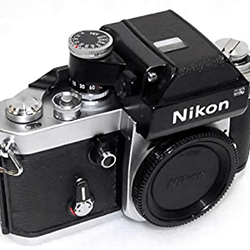
Nikon F2/F3
In 1959, Nikon introduced the F camera, and with time it became the go-to piece of gear for photojournalists because it was dependable, tough, and had a wide range of high-quality lenses. The F, which remained in production through 1974, was the first authentically successful professional 35mm SLR.
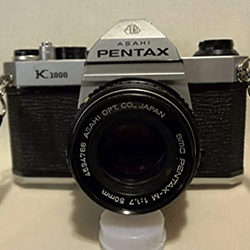
Pentax K1000
In less than 20 years of production, the Pentax K1000 sold more than 3 million units, making it a tremendous photographic success. It was the ideal pick for individuals wishing to begin photography because of its straightforward controls, sturdy construction, and reasonable pricing.
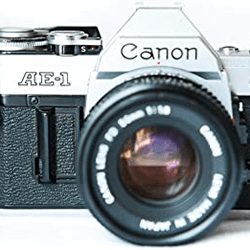
Canon AE-1
When it was first released, the AE-1 was the most advanced electronically controlled camera available. The AE-1 went on to become one of the most popular camera designs in history since it was simple to use and dependable as well.

Rollei 35 S
A compact and powerful camera capable of delivering excellent shots.
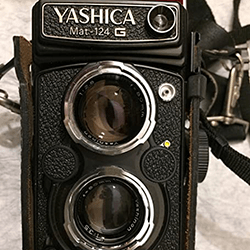
Yashica Mat 124G
A great entry-level vintage camera for anyone making the switch from 35mm to medium format film.
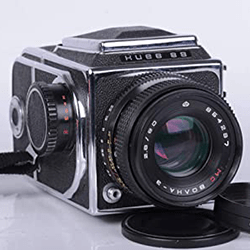
Kiev 88
An affordable medium-format camera capable of capturing stunning images.
Frequently Asked Questions
Which camera is best for taking vintage shots?
It depends on what you want to capture and how you want the expression on the image to be.
What is the best vintage polaroid camera?
The Polaroid SX-70.
Can you still use vintage cameras?
Of Course, you can. They are actually pretty incredible.
What is the most expensive vintage camera?
Due to the functions on the camera, the great quality of images, and its high demand, Hasselblad 500C/M would probably be the most expensive one.
Show more
Rent or subscribe to a vintage camera
Maybe you've guessed it by now... there are loads of retro cameras to choose from.
Don't know which to pick?
Try renting a camera and try out various.
How we picked the best
Sturdy build
With any camera, a solid body is one of the key features, and the same goes for vintage cameras - maybe, even more so. These little film babies have been around for some decades, and some of them might be even older than a regular user, so even if you use it carefully, we chose those that are strong and sturdy just by themselves.
Image quality
Even though there is a very special and dreamy vibe around film photography, it is still imperative that your vintage camera is able to correctly grasp the shot and deliver it with quality. It obviously won’t match with the newer film cameras, but will anyway get you some really nice images.
Rent vintage cameras from local creators.
Save up to 40%.
Global Coverage included.
https://wedio-cdn.s3.eu-west-1.amazonaws.com/blog-images/Best+For/Affiliate+pictures/hasselblad-500cm-wedio
https://www.wedio.com/en/rent/cameras/
























